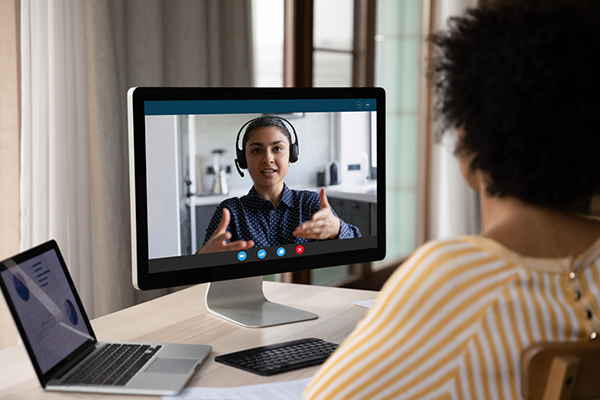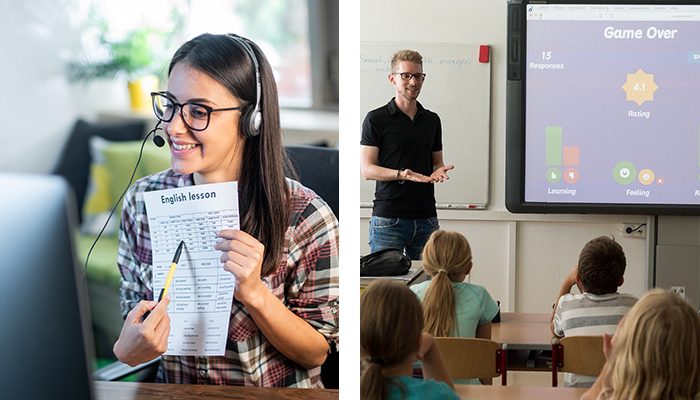
Online Tutoring is NOT Remote Learning or Distance Learning
Student Achievement Suffered Due to Remote Learning
In an article published this week by Education Week, reporter Mark Lieberman discusses the continued debate over the harms of extended remote learning. He cites a report published on November 28 from the American Enterprise Institute that “found that districts that stuck with full-time remote learning for longer in the first year of the pandemic saw larger declines in enrollment in subsequent school years” and that these findings showed clear signs that remote learning was among the factors that “diminished academic achievement for millions of students in the last couple of years.”
What Do They Mean by “Remote Learning?”
A definition is in order here, to make sure we all understand what they are talking about. Remote learning was the quickly constructed “solution” to schools that were closed to in-person learning due to the COVID-19 pandemic and lockdowns. Initially it was thought this would be a short-term solution, but school districts, parents, teachers, politicians, and others were reluctant to send students back to school while there was an increase in infections and uncertainty about how it would affect students in the school environment. So “online school” lasted much longer than first anticipated. Starting in the final months of the 2020-2021 school year, many schools kept students at home for many more months, or even the entire school year of 2021-2022. Other schools implemented a hybrid approach, where students attended 2 or 3 days in person, with the remaining days remote.
Remote learning was not a universally built and deployed replacement for in-person school, and some things quickly became clear. Not all students had the technology or the internet access needed to participate. Even those who did had to share that computer and internet access with siblings and parents who were suddenly working from home. At a particular disadvantage were students in lower-income areas. This was a huge contributor to student dropout rates and low attendance, as recent research showed.
Teachers were also inexperienced with the new format and struggled to translate classroom activities to online gatherings. As teachers dropped out, the ones who were left found themselves with even greater responsibilities and challenges. In most cases, there was little to no training or preparation for this new reality, and teachers struggled to do their best.
If Remote Learning is Bad, What About Online Tutoring?
There can’t be many people who aren’t aware of how much time we all spend staring at screens. “Globally, people average 6 hours 58 minutes of screen time per day. The average American spends 7 hours and 4 minutes looking at (an internet-connected) screen each day,” according to Digital Information World. Gen Z spends around 9 hours per day looking at a screen. For the average US teen, this breaks down to:
- Watching TV/Videos – 3 hours 16 mins
- Gaming – 1 hour 46 mins
- Social Media – 1 hour 27 mins
- Browsing Websites – 51 mins
- Other – 29 mins
- Video Chatting – 20 mins
- E-reading – 15 mins
- Content Creation – 14 mins
Additionally, 88 percent of parents report that their children between 0 and 11 years old are watching TV, 67 percent are using tablets, 60 percent are using smartphones, 44 percent are using a desktop/laptop, and 44 percent are gaming.
In light of this, what are the reasons to consider online tutoring for your child?
It’s One-to-One
Unlike remote learning, where there is one teacher for dozens of students, lecturing, assigning homework, and trying to keep students engaged, online tutoring is one tutor with one student, no distractions.
Content is Highly Personalized
The tutor is able to assess the student’s needs and tailor the subject, teaching method, and support to match that student’s needs.
Short, Variable-Length Sessions
Unlike remote learning, which required hours of sitting in front of a computer screen, online tutoring sessions are short and the time length is flexible, based on student age and attention-span and the difficulty of the subject matter.
Convenience Factor
Tutors and parents decide on a mutually convenient schedule. Families have a lot of activities going on, and the online format means you don’t have to drive somewhere. You choose the day/time that works best for your schedule, in the convenience of your own home.
Parents Have Total Visibility to Their Child’s Learning
Since sessions are online, parents can watch live or even record their child’s sessions, ensuring that they have complete visibility to what goes on in the tutoring session.
Parents Choose Their Child’s Tutor
In school, it’s the luck of the draw when it comes to which teachers your child spends the day with. With online tutoring, you review the available tutors and choose the one you think is the best match for your child. And you can always switch tutors if you find it’s not the best match after all.
How TutorUp Can Help
At TutorUp, all of our tutors are certified, classroom-experienced teachers. This means that they are not just subject matter experts in whichever subject your child needs help with. They are also trained educators who can assess a student’s needs and adapt their teaching approach to best help each student. They know how to evaluate the effectiveness of their tutoring and provide meaningful feedback to parents.
Contact us today so we can help your child succeed.


